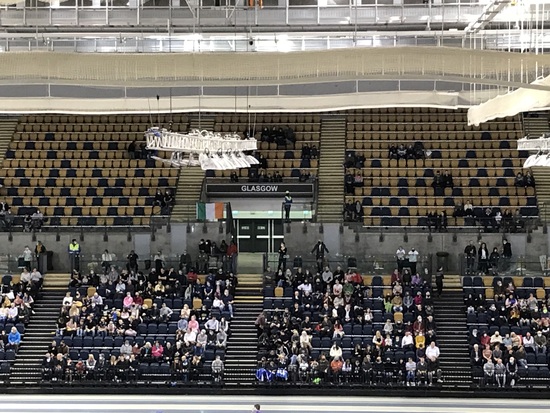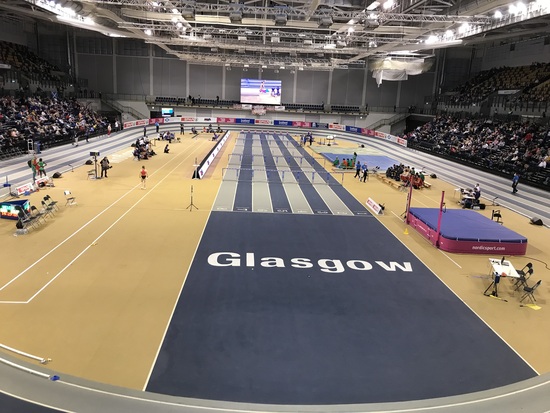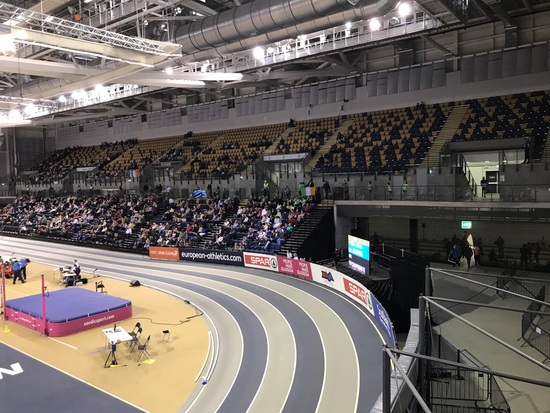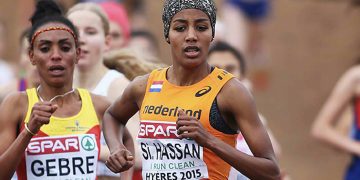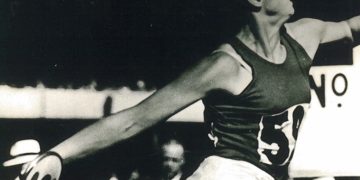RelatedPosts
The DNA meeting Glasgow did not have a good turnout, photo by Stuart Weir
The facility for DNA Glasgow meeting, photo by Stuart Weir
The crowd of the DNA Glasgow meeting, photo by Stuart Weir
This is the first of 3 pieces on the DNA event written by Stuart Weir.
The DNA (Dynamic New Athletics) meet in Glasgow
The DNA (Dynamic New Athletics) meet in Glasgow, Scotland featured teams from Scotland, England, Wales, Ireland, Spain and Portugal competing in 11 events, male, female or mixed. There were 5 individual races, two relays, high and long jump, shot put all leading into “The Hunt”, the finale which was a kind of handicap relay in which overall placings in the first 11 events converted to time, with the leader after 13 events starting first etc. The format was, I am told, of theft first used at the 2019 European Games in Minsk.
The event lost some of its gloss when poster girl (literally) and local girl, Laura Muir, withdrew with injury on the eve of event. Bit naughty of the official website still to be offering people the chance to buy tickets to watch Laura up to the start of the event. With regard to the British Athletes participating you would have to say that they were just a level below the elite. None of the GB Tokyo team, as far as I could see, were there.
The 60m, 60m hurdles and 800m followed the format of the person finishing first winning – dynamic but not new. It seems to work. The relays were also dynamic but no longer new mixed 4 by 400 and the less usual 2 by 2 by 200 – ie a male and a female athlete running 200m twice, alternating.
The new and dynamic part was the field events when athletes went head-to-head with one throw or jump. The event website said it was an easy to understand format but as it confused most of the media, I will spell it out. Take the shot put as an example. The six shot putters are divided into 2 groups of three. Athlete A competes head-to-head against Athlete B, 1 throw each. The winner gets 3 points. Athlete C competes consecutively head-to-head against Athletes A and B. The athlete with most points competes with the winning athlete in the other group, one throw each, for first and second place, the two athletes in second place in round one compete for third and fourth place etc. Just don’t anyone tell the Diamond League people. Having finally been persuaded to get rid of the nonsense of the final three shoot-out, they are sure to want to try this! This format is exciting but, of course, going against the time-honoured principle that the person who throws/jumps furthest wins.
In the end Spain won from England with Ireland third. Spain won 4 of the 11 events and were first equal in another. And as Geoff Wightman, stadium announcer, said, the crowd was the most enthusiastic ever at a DNA event!
First launched, the fast-paced and compact format which is the brainchild of European Athletics saw its second coming at the Emirates Arena and although it didn’t entirely hit the mark in every aspect, this pilot is showing potential.
Results
Men’s 60m – Andrew Robertson (England) 6.62
Women’s 60m – Maria Isabel Perez (Spain) 7.22
Men’s 60m Hurdles – Enrique Llopis (Spain) 7.67
Women 60m Hurdles – Teresa Errandonea (Spain) 8.22
Women’s 800m – Jenny Selman (Scotland) 2:04.73
Mixed 4 X 400 relay – Spain 3:18.90
Mixed 2 X 2 X 2 Relay – England 1:39.71
Men’s High Jump – Ciaran Connolly (Ireland) and Xesc Tresens (Spain)*
Women’s Long Jump – Evelise Veiga (Portugal) 6.50
Men’s Shot – Scott Lincoln (England) 20:13
*as both high-jumpers failed with their single jump in the final jump-off, there is no winning height to record.
Author
We are The Shoe Addicts showing our love of Track and Field among many other sports. We make videos, we have fun doing it. Contact: shoeaddictsllc@gmail.com
View all posts

